Tritium launches 175 kW DC charger
Speaking at the ACT virtual conference, Tritium CEO Jane Hunter presented the RT 175-S fast charger with 175 kW power capability. Tritium’s RT 175-S will be the first charger on the US market capable of Plug and Charge vehicle-to-charger communication.
Tritium presented its Plug and Charge technology in May this year, that requires neither cards, nor keys, but enables the vehicle to communicate with the RT 175-S via the cable. This allows drivers to approach a charger, irrespective of the charging network operator, and to have their charging session automatically and securely billed when the plug connects to their vehicle. The DC charger can power EVs to 80% charge in 15 minutes.
As the Tritium CEO Jane Hunter said in her presentation, Plug and Charge technology means that “the vehicle becomes the credit card when it talks to the charger.” This degree of convenience and the 175 kW capacity make the charger ideal for fleets, enabling commercial vehicles to get back on the road faster.
The company notes that the new DC charger is thus “ideal for high population areas and can be easily accommodated at fuel stations, rest stops, municipalities, utilities, fleets, retail, education and heavy infrastructures such as mining and ports”. The charger has a slim and compact shape, so “Customers can easily upgrade from a 50 kW charger with the same footprint.” The charger’s exterior, like all Tritium chargers, is flexibly adaptable to represent any network, institution or provider.
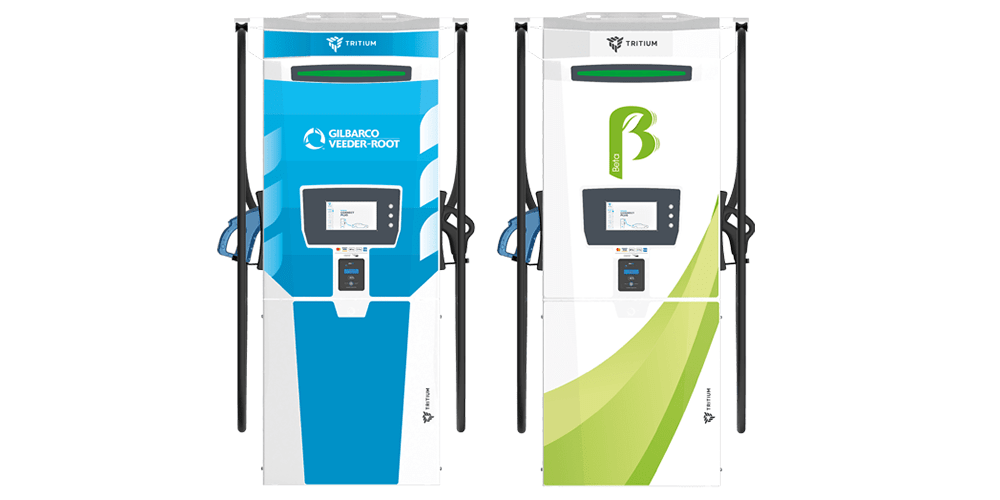
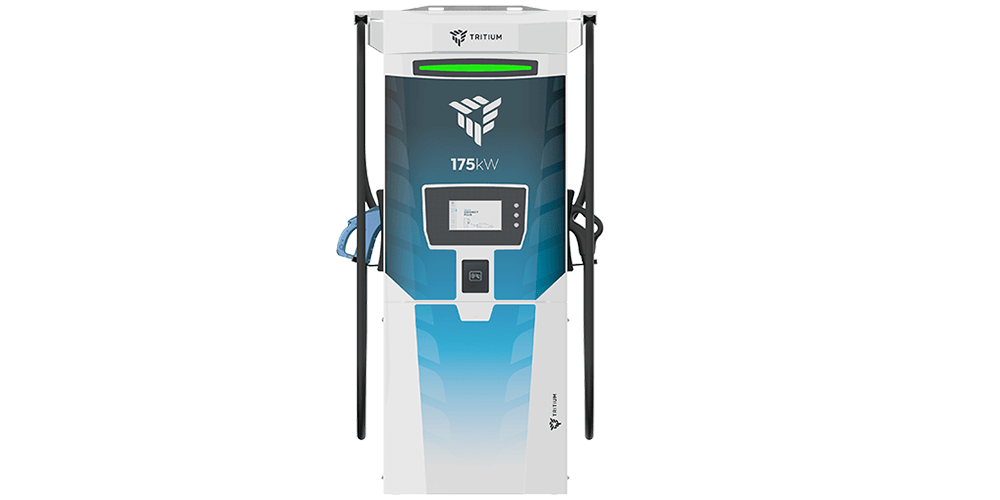
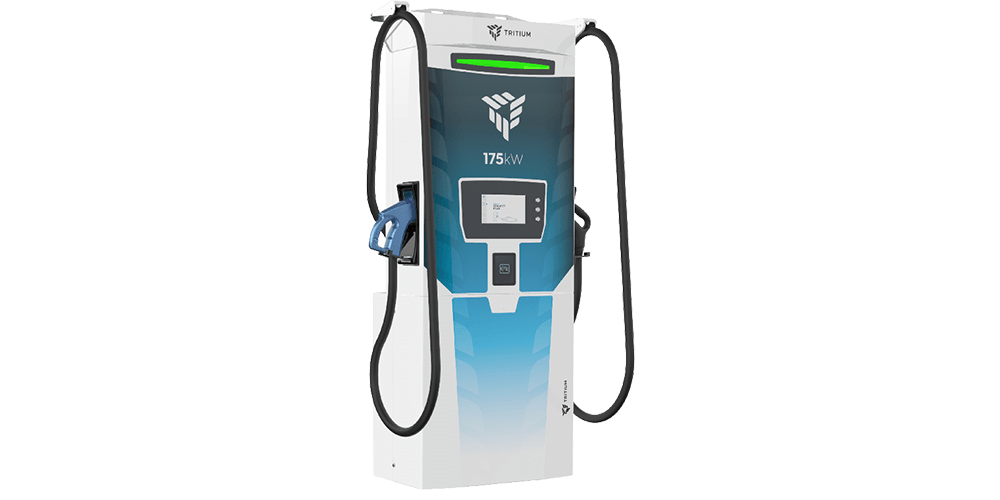
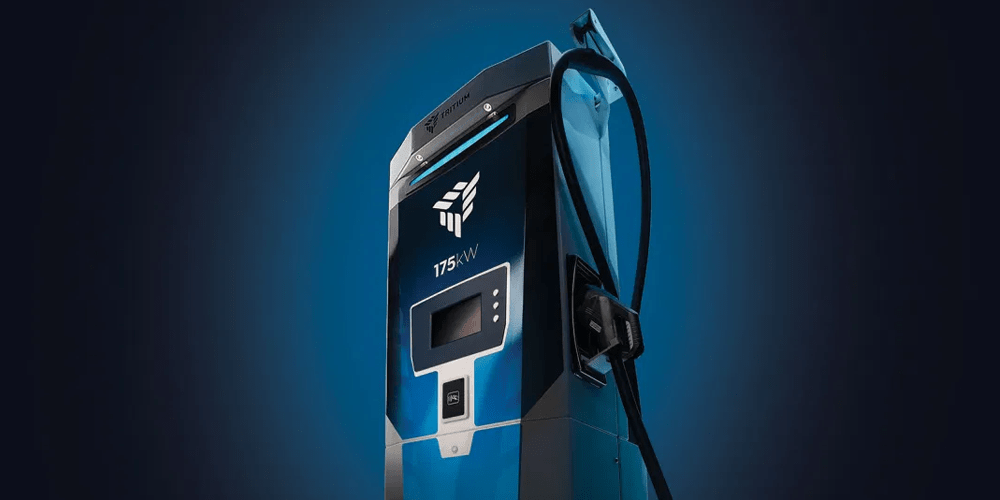
The RT 175 is being targeted at both public charging as well as for fleets and commercial vehicles, suitable for vehicle classes from 2 through to 8. Jane Hunter told electrive.com that the Australian company is focussing on all of these options: “We’ve already installed it in Canada with a large public fleet”, while Tesla owners can already use the chargers with the use of an adapter that Tesla offers online. Hunter also noted that more cars are capable of charging with a 175 kW charger now that car batteries are getting bigger.
As for functionality in the heat and cold, Hunter said in the presentation, the charger is “liquid-cooled with an environmentally-friendly coolant, and being liquid-cooled, that means it is a fully sealed solution and it doesn’t require annual filter changes like air-cooled models.”
It seems that here the Australian company with offices in the US and the Netherlands has an advantage coming from the sunburnt country: “The charger was developed here in hot and dusty Australia to withstand incredible heat, humidity, dust, salt as well as keep out creepy crawlies, I can tell you, we’ve got a lot of them here!” joked the Tritium CEO.
In fact, the charger can cope with both extreme heat and extreme cold. The isolated power unit and integrated reinforced isolating transformer mean the charger can allow for continuous 175 kW operation at 104° F / 40° C and 150 kW operation at 122° F / 50° C. On the other end of the scale, there is an operational feature to include a cold-weather kit for temperatures down to – 22° F / -30° C.
The company confirmed that they are already talking to network providers in Europe, while the company has a location in Long Beach, California, where the chargers are already installed.
For more heavy-duty options, last year Tritium refitted its chargers at Ionity charging sites with liquid-cooled cables that will enable charging capacities of up to 350 kW. The Australian company also presented its latesthigh power charging system at Cenex-LCV in the UK in September last year. The system for commercial use is scalable and capable of charging an electric vehicle with 475kW.
“People need easily accessible charging opportunities and charging times in minutes not hours,” the Tritium CEO surmised.
Source: press release via email and live online ACT conference

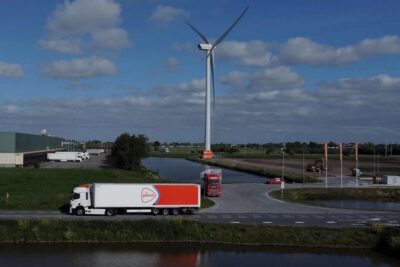

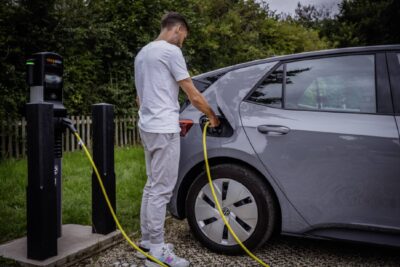
0 Comments